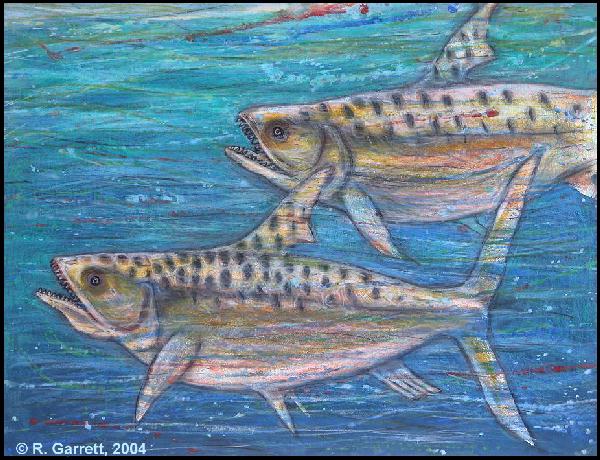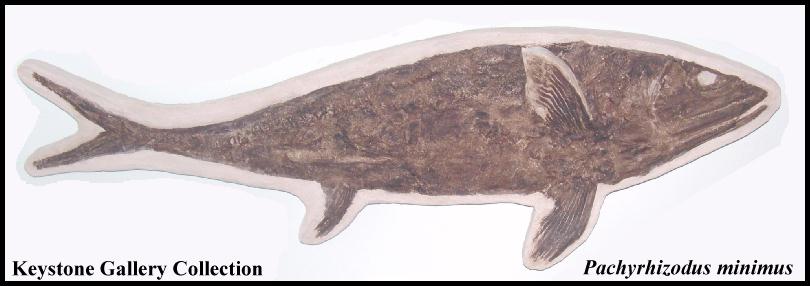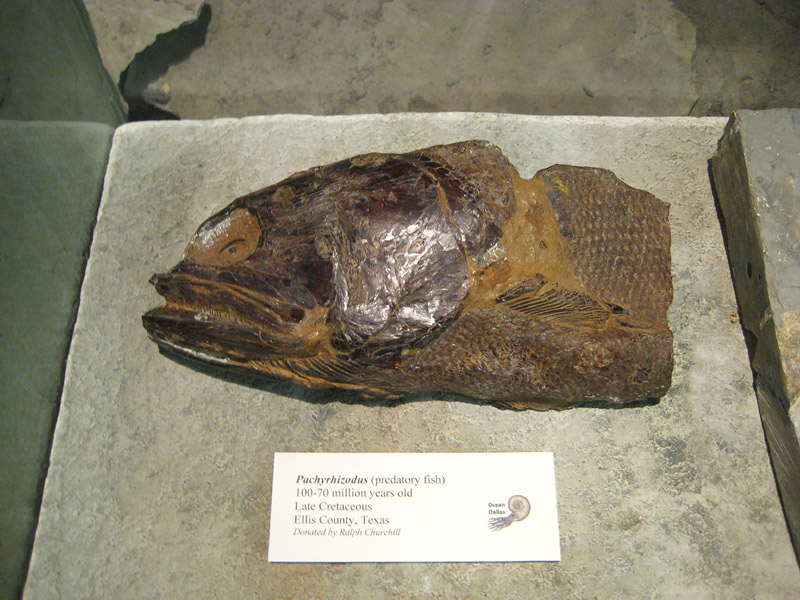[Recent Entries][Archive][Friends][User Info]
| May 28th, 2013 | |
|---|---|
| 07:19 pm [industrialterro] [Link] |
Pachyrhizodus Pachyrhizodus is an extinct genus of bony fish that lived during the Late Cretaceous in the Western Interior Seaway in North America and in Colombia, South America. Pachyrhizodus is the genus of medium sized (up to 3m) Late Cretaceous fish found in the Smoky Hill Chalk. First named by Agassiz from specimens collected from the English Chalk, E.D. Cope later named two new species from Kansas (P. caninus and P. leptopsis). A much smaller member of the genus, Pachyrhizodus minimus, was added by Albin Stewart in 1899. The remains of at least three species of Pachyrhizodus are fairly common finds in the Smoky Hill Chalk of Western Kansas. Two of the species, Pachyrhizodus caninus and P. leptopsis were medium sized predators, up to 6 ft (2m) or more in length. They have large teeth which can be easily confused with those of mosasaurs (see Stewart and Bell, 1994). The third species, P. minimus, probably grew no larger than 3 ft (1 m). For unknown reasons, P. minimus is often preserved as a complete fish, in some cases with the remains of internal organs and scales. The first specimens of Pachyrhizodus caninus were apparently found by E. D. Cope while in western Kansas in 1871, mentioned briefly in his 1872 note "On the families of fishes of the Cretaceous formation in Kansas," and described more fully by him in 1875. He noted that the skull of one specimen was "about a foot in length by 6 and a half inches wide." The remains were found in Fossil Springs Canyon, south and east of Fort Wallace (Logan County). Pachyrhizodus minimus, was described from a lower jaw found by Alban Stewart in 1899 near Butte Creek in Logan County. As its name implies, it is a much smaller fish than P. caninus. Since then, numerous examples of complete fish of this species have been found in the chalk Miller (1957) reported on a specimen (FHSM VP-326) with preserved intestinal casts found by George Sternberg near Hackberry Creek in SW Trego County. The heavy, toothy jaws of Pachyrhizodus leptopsis Cope 1874 have been responsible for some confusion among paleontologists. Specimens from the Late Cretaceous (Cenomanian) of Texas were described by Stenzel (1944) as very early mosasaurs. Thurmond (1969) described a specimen as the jaw of an early mosasaur. Stewart (1989) and Stewart and Bell (1994) showed convincingly that the jaws originally described as being from the earliest mosasaurs in North America actually came from Pachyrhizodus leptopsis. In that regard, Martin and Stewart (1977) reported that the earliest known North American mosasaurs are actually from the Fairport Chalk Member (Middle Turonian) of the Carlile Shale in Kansas.
Ископаемые останки (1, 2, 3, 4, 5):
Tags: Вымершие рыбы, Лучепёрые, Мел |







